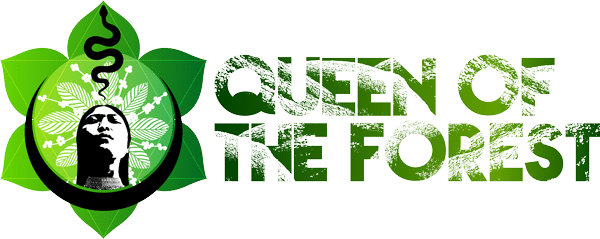Forest People, FOREVER THE FOREST
“Reclaiming Roots: How the Global Renaissance of Indigenous Practices Like Hapeh and Ayahuasca Is Healing Cultures and Restoring Balance”
“Indigenous Revival: How Sacred Practices Are Reversing Centuries of Cultural and Environmental Exploitation”
The renaissance of Hapeh and other indigenous practices, such as Ayahuasca ceremonies and Peyote churches, represents a significant cultural shift that is beginning to counteract the historical processes of appropriation and exploitation of indigenous knowledge. This resurgence is not just about reviving ancient practices but also about reclaiming, preserving, and respecting the cultural and spiritual heritage that these practices embody. Here’s how this renaissance is contributing to a reversal of the earlier processes:
1. Reclaiming Indigenous Knowledge and Practices
For centuries, indigenous knowledge, particularly in the realm of medicine and spirituality, was appropriated by European settlers and transformed into commodities for the global market. The spiritual significance and cultural contexts of these practices were often ignored or erased. However, the modern renaissance of Hapeh, Ayahuasca, and Peyote, among others, is driven largely by indigenous communities and allies who are actively reclaiming these traditions. This movement is about more than just using these substances; it involves honoring the rituals, stories, and teachings that surround them, ensuring that they are passed down in their full context to future generations.
2. Cultural Revitalization and Identity
The revival of these practices is also part of a broader effort to revitalize indigenous cultures and strengthen identity. For many indigenous communities, reconnecting with traditional practices like the use of Hapeh or participating in Ayahuasca ceremonies is a way to reconnect with their roots, resist cultural assimilation, and assert their identity in a world that has long marginalized them. This renaissance empowers indigenous peoples to take pride in their heritage and share their knowledge on their own terms, fostering a sense of community and continuity with the past.
3. Global Awareness and Respect for Indigenous Traditions
As interest in Hapeh, Ayahuasca, and other indigenous practices grows worldwide, there is an increasing emphasis on respecting the origins and custodians of this knowledge. Unlike in the past, where indigenous practices were often exploited without acknowledgment, the current movement is more focused on collaboration and respect. Non-indigenous practitioners and participants are often encouraged to approach these traditions with humility, learning from indigenous leaders and participating in ways that support the preservation of these cultures rather than exploiting them.
4. Sustainable and Ethical Practices
The renaissance of these practices is also intertwined with a growing awareness of environmental sustainability and ethical harvesting. Many indigenous communities are advocating for sustainable practices that protect the natural resources required for these rituals. For example, there are efforts to ensure that the harvesting of plants used in Hapeh and Ayahuasca is done in a way that does not deplete the environment or harm the ecosystems that these communities rely on. This is a significant departure from the past, where the commodification of such plants often led to environmental degradation.
5. Legal and Social Recognition
Another important aspect of this renaissance is the growing legal and social recognition of indigenous spiritual practices. In many countries, there is now legal protection for the use of sacred plants like Ayahuasca and Peyote within indigenous contexts. This recognition is an important step towards correcting the historical wrongs where these practices were outlawed or suppressed. It also empowers indigenous communities to openly practice their traditions without fear of persecution, further supporting cultural revitalization.
6. Economic Empowerment and Autonomy
The global interest in these practices has also opened up new economic opportunities for indigenous communities. By sharing their knowledge and practices in a respectful and authentic manner, many communities are able to generate income that supports their autonomy and well-being. This is a stark contrast to the past, where indigenous knowledge was often extracted without any benefit to the original custodians. Today, there is a growing market for ethically sourced and community-supported products, such as Hapeh, which helps to sustain these traditions and provide economic empowerment to indigenous peoples.
7. Healing and Reconciliation
On a deeper level, the resurgence of these practices is contributing to a broader healing and reconciliation process. For indigenous peoples, the revival of their spiritual practices is a form of healing from the trauma of colonization and cultural loss. For non-indigenous participants, engaging with these traditions in a respectful way can foster greater understanding, empathy, and a sense of shared humanity. This mutual respect and exchange have the potential to heal the historical wounds inflicted by colonization and build a more equitable and respectful relationship between indigenous and non-indigenous peoples.
The renaissance of Hapeh, Ayahuasca, Peyote churches, and other indigenous practices is a powerful movement that is helping to reverse the historical processes of appropriation, exploitation, and cultural erasure. By reclaiming their knowledge, revitalizing their cultures, and promoting sustainability and respect, indigenous communities are not only preserving their traditions but also reshaping how the world engages with these ancient practices. This renaissance represents a crucial step towards cultural preservation, environmental stewardship, and the healing of both individuals and communities, offering a path towards a more just and harmonious world.



